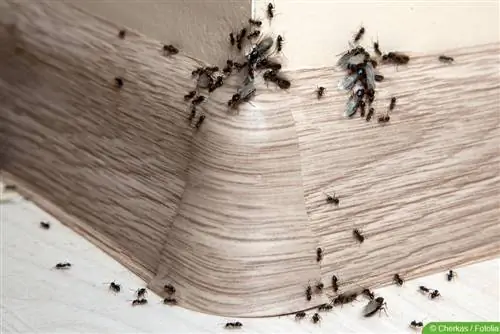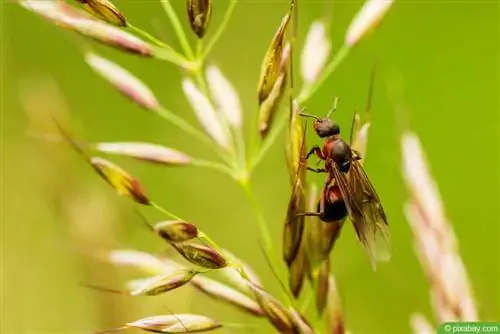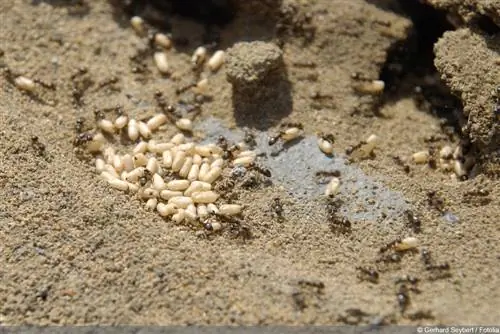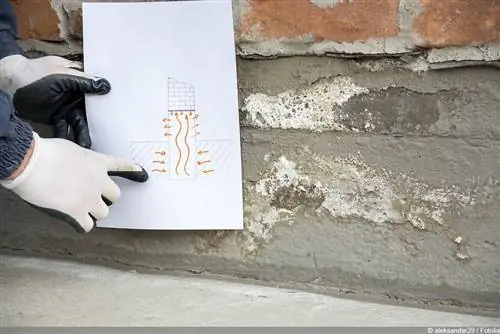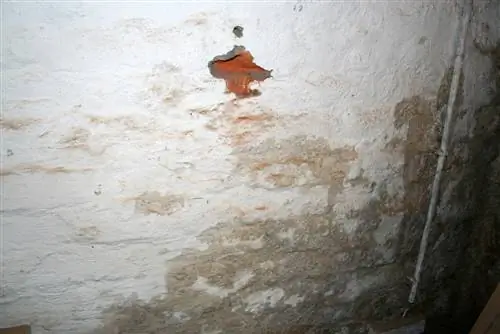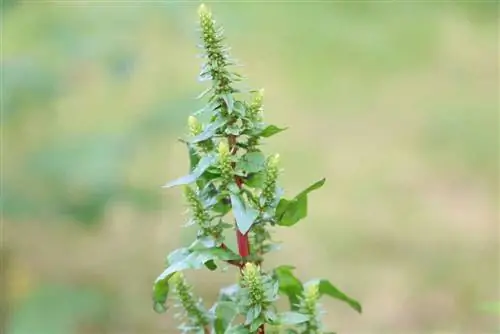- Author admin [email protected].
- Public 2023-12-17 03:39.
- Last modified 2025-01-24 12:45.
Ants like to migrate from the garden indoors because they find food and a place to live there. They enter through cracks and can create nests in walls, which damages them.
Possible Damage
The experts in destroying houses are termites, which are related to ants. Our native ants cause far less damage, but an infestation should not be underestimated. If nothing is done against ants and they permanently nest in the masonry, this can even have a negative impact on the statics.
Possible damage caused by ants is:
- Decomposition of wall material
- Destruction of wooden components
- Grinding of insulation materials
- Reducing the load-bearing capacity of wooden beams
- Moisture and mold
If ants are discovered in the masonry, the damage is usually very extensive. The reason for this is that the insects remain unnoticed for a long time due to their size. Often there are only small piles of dust around walls. This is the first warning sign that the insects may be living in the wall.
Causes of an infestation
The causes of ants in masonry are very simple, because they are looking for safe accommodation there and find more than enough food in the house. They prefer to invade houses, especially in years when it is very rainy or there is little food for them in nature.
Tip:
If you notice that ants are already starting to build nests in the garden near the house, relocate them. The greater the distance between a nest and the house, the less likely the ants are to occupy the masonry.
Immediate measures
If you have noticed an infestation in the masonry, you should take immediate action against the insects. Often it is not necessary to use insect repellents against ants, which are actually useful. Simple measures and proven home remedies can also help.
How to deal with ants:
- Closing openings in masonry
- Replace leaky seals
- Check walls for moisture and take countermeasures
- Disrupting existing ant trails
- Remove food sources in the house
Even if you have removed food sources, including trash disposal areas or pet food bowls, that won't stop insects from searching for new sources inside the home. It is therefore important to chase them away using appropriate means. The advantage is that ants react very strongly to some smells. This is a great way to break up roads and drive insects out of walls.
Ants don't like the following:
- Cinnamon
- Vinegar water
- Essential oils (lemon, lavender, peppermint)
- Cucumber peels
- Sulfur
Note:
You should avoid using products such as baking powder or baking soda, as this can result in the painful death of the insects. If the infestation is so severe that you cannot be deterred, you should contact a specialist.
In addition to scents that ants don't like, they also react to chalk or baby powder. Both contain talc, which the insects avoid because it would clog their antennae or respiratory tract. Therefore, you usually do not cross a drawn line with these means. Once you have driven away the ants, check the masonry for damage. If necessary, renovation measures may be necessary after an ant infestation to remove mold or replace destroyed elements.
Prevent future infestations
So that you are spared from insects in the house, you should first and foremost ensure that the masonry is tight. It is generally worth checking joints and seals at regular intervals, because not only do they provide an open door for insects, but energy is lost through them, which increases your heating costs. A single ant does not make up an entire nest in the house, but the insects send out scouts to look for food. If you see a single ant in the house, take it outside immediately.
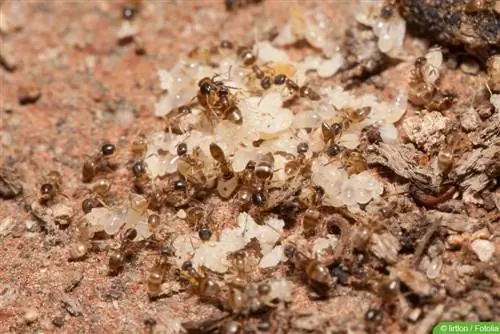
Ants are always a risk near the house. If you create retreat spaces for the insects in the garden, they will settle there and not even come close to the walls. Nests in inconvenient places should be relocated quickly.

